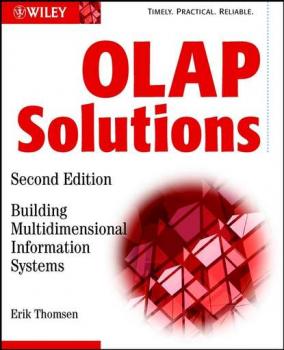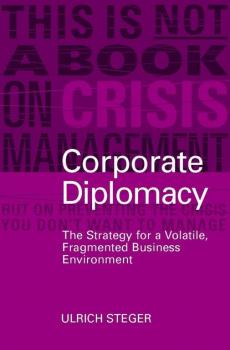Управление, подбор персонала
Различные книги в жанре Управление, подбор персоналаStrategic Networks
This book explores the creation of 'learning networks' and sheds light on how they function:– real versus virtual forms of interaction, collaboration versus competition in the learning process, and joint value creation versus individual value appropriation in networks. Written by international experts in the field of global strategy. Contributions have been selected for their insights and interdependence between organizational learning and networks. Looks at topics such as real versus virtual forms of interaction, collaboration versus competition in the learning process, and joint value creation versus individual value appropriation in networks.
Restructuring Strategy
New industries are emerging; others are disrupted; old barriers are crumbling, while new ones are rising. This book seeks to better understand the challenges facing industries, networks, businesses and management during periods of industry structuring and restructuring. Comprising a series of contributions from experts in the field, the book addresses key questions about the opportunities and threats posed by these times of turmoil, including: How do existing industries sustain their competitiveness in such difficult times? How do networks stave off threats from new technologies? How do emerging and incumbent companies survive when growth is not an option? And how should companies be governed during periods of industry structuring and restructuring? In answering these questions, the contributors provide an overview of the strategies that industries, networks, businesses and managers are currently deploying in order to adapt to chaotic conditions and to enhance business profitability. Their responses make a distinctive contribution to scholarly thought and management practice.
Strategic Management
This highly popular introduction to strategic management has now been revised to take account of the latest developments in the field. New edition of a highly popular introduction to strategic management. Provides a clear framework for understanding the issues in corporate strategy, supported by current case examples. Revised to take account of the latest development in the field. Now features twelve new cases. Includes new chapters on issues relating to the resource-based view of the firm, innovation, learning, and the ‘new economy’. Includes a new concluding chapter looking at present and future issues in strategic management. Continues to combine the latest management concepts with and emphasis on current business applications and implementation.
OLAP Solutions
OLAP enables users to access information from multidimensional data warehouses almost instantly, to view information in any way they like, and to cleanly specify and carry out sophisticated calculations. Although many commercial OLAP tools and products are now available, OLAP is still a difficult and complex technology to master. Substantially updated with expanded coverage of implementation methods for data storage, access, and calculation; also, new chapters added to combine OLAP with data warehouse, mining, and decision support tools Teaches the best practices for building OLAP models that improve business and organizational decision-making, completely independent of commercial tools, using revised case studies Companion Web site provides updates on OLAP standards and tools, code examples, and links to valuable resources
Visible Thinking
Causal mapping is a tool that enables you to make sense of challenging situations so that you can get more out of them. A causal map is a word and arrow diagram in which ideas and actions are causally linked with one another through the use of arrows. Typically, only specialists such as physical or social scientists and operations researchers know about causal mapping and the tool is therefore not widely known or its broad applicability understood. Until now there has been no guidance available on how to make use of the tool for more general purposes. This book lets managers understand the theory and practice of causal mapping in layman's terms for use in both individual and group settings. It shows managers how to develop and use action-oriented strategy maps and logic models in business decision making. The authors show how causal mapping can be used as a tool to make sense of challenging situations and develop effective business responses.
Corporate Diplomacy
Based on a wealth of empirical studies and case studies, this book explains the strategic choices companies have to make in order to remain consistent. In each chapter, real-life examples illuminate the key message managers should take away from the book. It offers a purely managerial viewpoint focused on what managers can do to manage the business enviroment in any situation.
Business Genetics
A revolutionary way to describe business, xBML (extended Business Modelling Language) is an intuitive graphical language that unlocks the DNA of a corporation using a system of diagrams based on five Ws (Who; What; Which; Where; When). xBML gives companies an complete and accurate map of their enterprise, that can then be re-used repeatedly to describe, plan and create improvement. It’s time to throw out the flow charts. xBML breaks down the silos of an enterprise and provides the means for clear, concise communication between all members of the organization. Tyler and Baker provide a complete guide to xBML, and to why unlocking an organization’s Business Genetics will lead to quantifiable business improvement.
Computer Forensics
Would your company be prepared in the event of: * Computer-driven espionage * A devastating virus attack * A hacker's unauthorized access * A breach of data security? As the sophistication of computer technology has grown, so has the rate of computer-related criminal activity. Subsequently, American corporations now lose billions of dollars a year to hacking, identity theft, and other computer attacks. More than ever, businesses and professionals responsible for the critical data of countless customers and employees need to anticipate and safeguard against computer intruders and attacks. The first book to successfully speak to the nontechnical professional in the fields of business and law on the topic of computer crime, Computer Forensics: An Essential Guide for Accountants, Lawyers, and Managers provides valuable advice on the hidden difficulties that can blindside companies and result in damaging costs. Written by industry expert Michael Sheetz, this important book provides readers with an honest look at the computer crimes that can annoy, interrupt–and devastate–a business. Readers are equipped not only with a solid understanding of how computers facilitate fraud and financial crime, but also how computers can be used to investigate, prosecute, and prevent these crimes. If you want to know how to protect your company from computer crimes but have a limited technical background, this book is for you. Get Computer Forensics: An Essential Guide for Accountants, Lawyers, and Managers and get prepared.
Space Race
Five years ago the world of agency communications turned upside down. Ogilvy introduced 360 degree thinking, Unilever formulated their ABC process, TBWA developed their Disruptive philosophy, and total communications planning was born. Now, total communications planning is being increasingly demanded by clients. The question is no longer where does the future lie, but how does an agency get there as quickly as possible? This book sets out to define the structure of tomorrow's agencies by interviewing the leading lights of the industry today. Jim Taylor, himself an experienced practitioner of Total Communications Planning, identifies common issues and themes to offer a set of likely scenarios for The Agencies of the Future.
Business Orchestration
Digital convergence is redefining industries, and putting information, knowledge and collaboration at the heart of strategic leadership and management. In the face of such change it is those leaders who can ‘orchestrate’ a complex network of employees, customers and suppliers in a single ongoing learning experience that will succeed. Exploring four learning roles for customers (information acquirer; explorer; performer; inventor) and orchestrators (conductor; architect; auctioneer; promoter), Business Orchestration provides a strategic view of how to harness digital convergence by mobilizing and integrating the resources of other companies to create business value.









